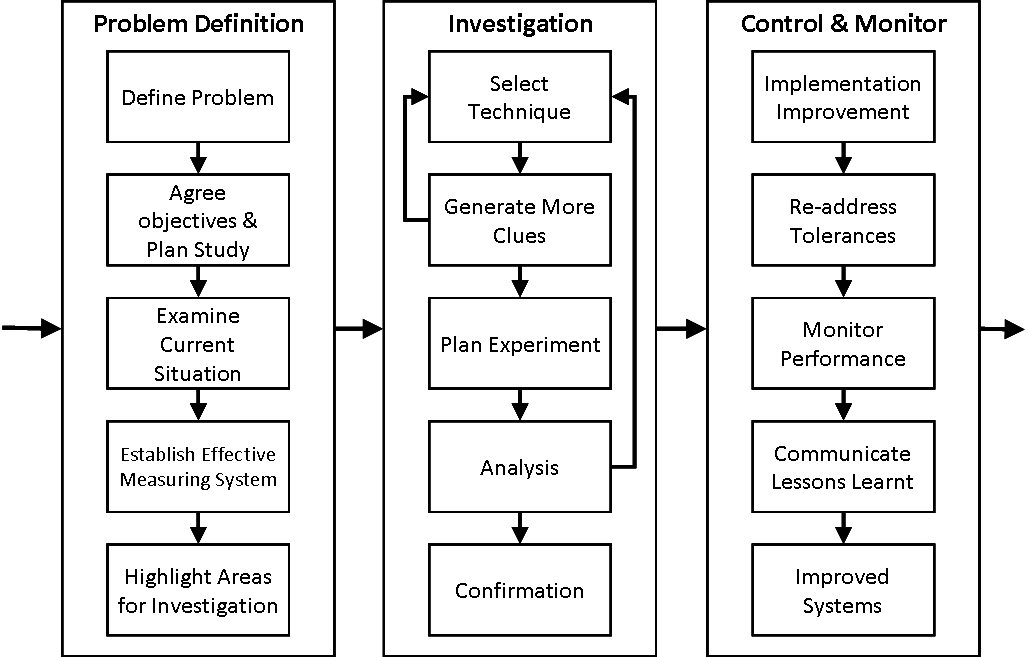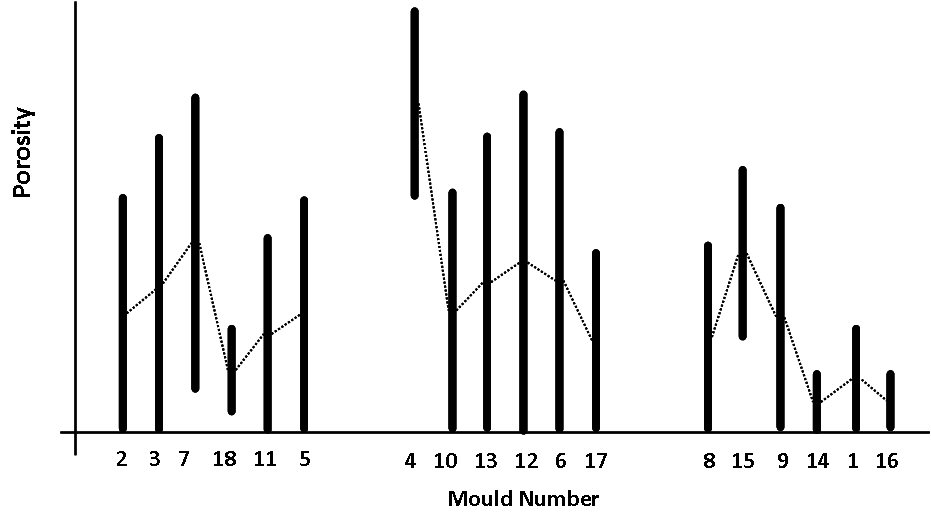5.32 - Quality Problem Solving by Experimental Design Method
The methodology includes a range of techniques for experimental design that are applicable to most areas of product design and manufacture.
The complimentary and rather more complex Taguchi technique is summarised in guide 6.06.
Problem Solving Methodology

The Problem Solving System
The system is split into three distinct stages:-
1 Problem Definition
- The purpose of this stage is to clearly define the problem to be solved prior to carrying out experiments. Effective preliminary use of paper based problem elimination techniques is essential to minimise effort. The existing data must be examined to ascertain the severity of the problem. Experiments take considerable time and resource. Good preparation beforehand can maximise effective use of time.
- Once the problem area is identified, en effective measuring system must be established. Apparent variations in output could be due to variations in the measuring system as well as variations in the product.
- Brainstorming of potential areas for investigations is used.
- Stand back and look for potential areas of investigation likely to reveal underlying causes
Tools Used: Brainstorming, Cause or Effect, Meaning System Analysis.
2 Investigation
The causes of the variation are likely to display Pareto patterns of effects which help identify the biggest causes for elimination followed by next biggest etc. Identify the trends or patterns to the variation. For example, using Defect Concentration Diagrams or Multi-Vari charts. If this stage is carried out thoroughly then there should only be a few factors left which require thorough experiment supported by good common sense scrutiny.
Tools Used: Multi-Vari, Defect Concentration Diagram, Pained Comparison, Component Search.
3 Control and Monitor
There must be a permanent procedure for measuring and monitoring the process output, such as SPC, to facilitate feed-forward control of the process. This measurement system must be capable of detecting any future deterioration in process quality / capability. Finally, the lessons learnt from the problem solving process should be communicated and the same systematic approach applied to other problems.
Tools Used: SPC, Pre-Control, Control Charts, Tolerancing Charts.
Examples of Problem Solving Techniques
- A unique measuring system was developed to detect casting porosity
- A clue generation technique used several iterations to reduce the number of variables to be tested - see below:-
- 1st Multi-Vari: Showed one quadrant of the mould gave more scrap. This was improved after correcting a dimensional problem on the tooling.
- 2nd Multi-Vari: Showed a mould to mould variation
- Concentration Diagram showed porosity on one side of the casting, usually on the flat surfaces.
Multi-Vari of Housing Casting

- A brainstorming session then rationalised the causes by the clues
- Four variables tested in a statistically designed experiment gave results which prompted a return to further Multi-Vari charts in order to provide more clues.
- This showed one dominant variable which was found to be not adequately controlled. Once it was controlled it proved to have been the main cause of the porosity.
- A permanent method of monitoring and controlling this variable was established.
- The system was then permanently improved and the porosity rejects have been consistently reduced by an order of magnitude.
Notes:
See Analytical Process Thinking 2.14 and Design for Six Sigma 6.24